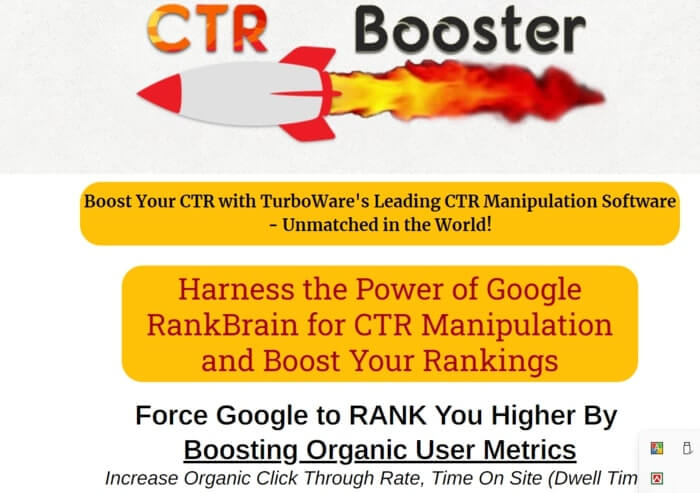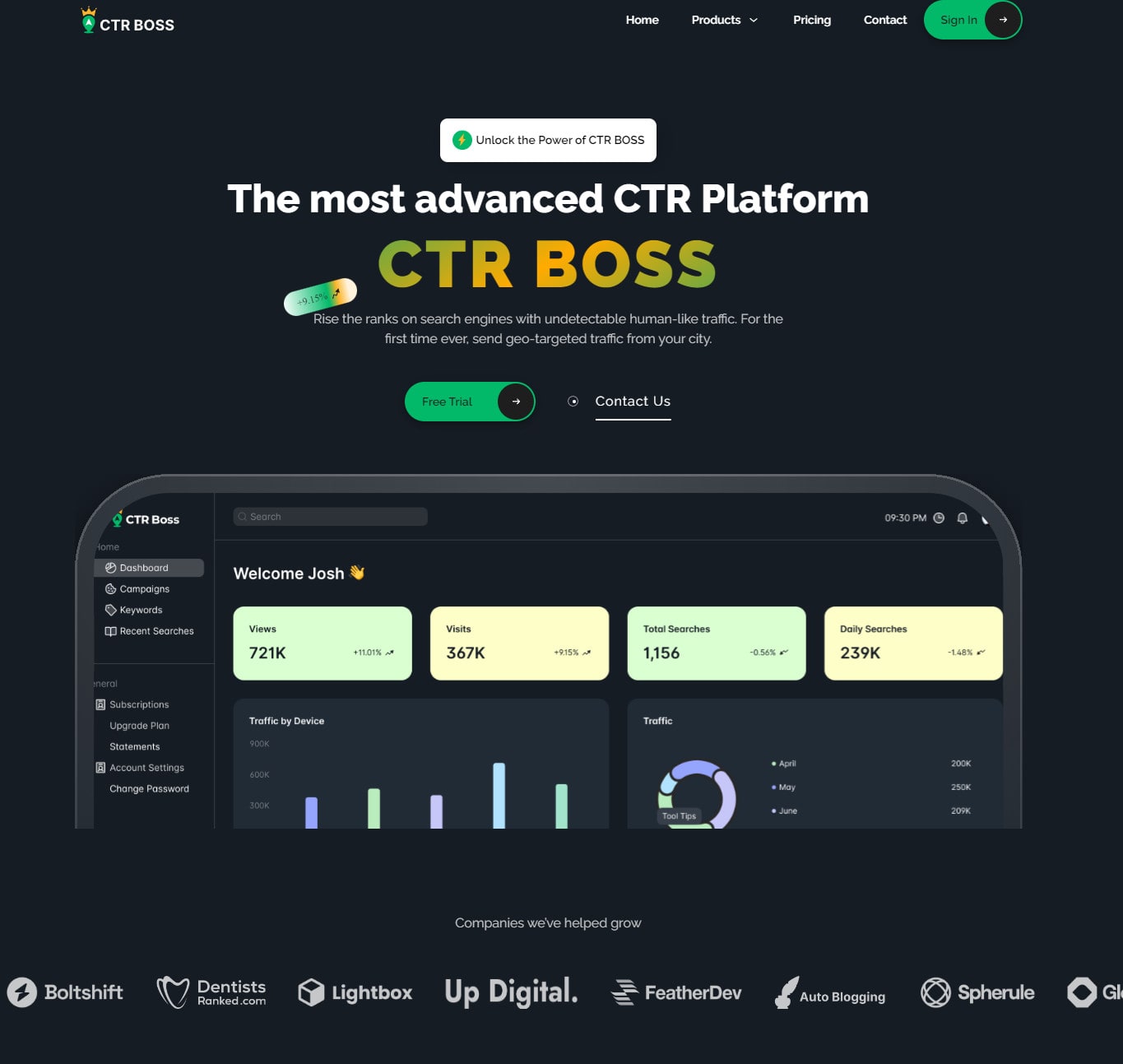The Influence of a CTR Manipulation Press Release on Brand Awareness
Wiki Article
How to Measure the Influence of CTR Adjustment on Your Advertising And Marketing
Comprehending the nuances of click-through price (CTR) adjustment in advertising is important for organizations striving for authentic customer interaction. By analyzing crucial metrics such as conversion rates and bounce rates, marketers can reveal potential inconsistencies that might arise from man-made improvements.Comprehending CTR Adjustment
Recognizing CTR manipulation is vital for marketing professionals looking for to enhance their campaigns and make certain information honesty. Click-through rate (CTR) refers to the proportion of customers who click on a details web link to the overall number of individuals who view the ad or content.The effects of CTR manipulation prolong beyond mere data distortion; they can weaken count on digital advertising and marketing. When businesses rely upon filled with air metrics, they might purchase ineffective projects, inevitably damaging their roi. Additionally, systems might punish marketers participating in such methods, bring about additional ramifications for their advertising initiatives.
To successfully deal with CTR manipulation, online marketers need to establish a detailed understanding of their data resources and analytics tools. By using sophisticated monitoring methods and looking at traffic resources, they can determine uneven patterns and make certain that their efficiency metrics reflect genuine customer engagement - CTR Manipulation. This caution is essential for cultivating long-lasting success in an increasingly affordable electronic landscape
Key Metrics to Assess
Effective analysis of key metrics is important for evaluating the real efficiency of advertising campaigns and identifying potential CTR control. One key statistics to consider is the Click-Through Rate (CTR) itself, which represents the proportion of users who click an advertisement to the overall variety of customers that view it. An unexpected spike in CTR might indicate manipulation, requiring additional examination.Furthermore, keeping track of conversion prices is important. A high CTR with a low conversion price could signify that the clicks are not real or that the targeting is misaligned (CTR Manipulation). Assessing bounce prices can provide insight right into user interaction; a high bounce rate after a click may suggest that the traffic is not quality-driven.

Tools for Measurement

Additionally, A/B testing tools such as Optimizely or VWO can promote trial and error with various advertisement variations to establish which aspects drive higher CTR. These devices enable marketers to examine real-time performance and make data-driven modifications. Social media analytics tools, like Hootsuite or Sprout Social, can likewise contribute in comprehending CTR within social systems, supplying understandings right into target market behavior and interaction fads.
Furthermore, heat mapping tools, such as Hotjar, can reveal how customers communicate with ads, helping to identify where improvements can be made. Combining these devices creates a robust measurement framework, enabling online marketers to determine the effects of CTR control successfully. Eventually, the best selection of measurement tools is critical for making educated advertising and marketing choices and enhancing campaign efficiency.

Examining Lasting Effects
One have to take into consideration the lasting results of CTR manipulation on overall advertising performance, as temporary gains can typically mask much deeper effects. With time, artificially inflated click-through prices may result in decreased count on from consumers and internet search engine alike. When customers consistently come across deceitful techniques, they might end up being hesitant to engage with the brand, resulting in lower conversion prices in the future.Furthermore, algorithm updates from platforms such as Google are developed to focus on real involvement over filled with air metrics. Services that count on CTR manipulation may find themselves penalized, leading to a decrease in natural reach and exposure. This can have a plunging result on brand credibility and consumer commitment, inevitably weakening the really objectives that the first control sought to attain.
Moreover, the data gathered from manipulated CTR might misinform online marketers in their approach advancement. Counting on skewed data can cause misdirected projects that stop working to reverberate with the target market, resulting in squandered sources and missed opportunities. It is critical for online marketers to analyze the long-term implications of CTR adjustment and prioritize lasting, honest involvement techniques for lasting success.
Moral Considerations in CTR Control
In the world of digital advertising, moral considerations surrounding CTR manipulation are vital. While the wish to improve click-through prices (CTR) can lead to short-term gains, the potential long-term repercussions on brand integrity and customer trust fund can not be neglected.Additionally, moral problems reach conformity with regulations such as the Federal Profession Commission (FTC) guidelines, which mandate transparency in marketing. Stopping working to adhere to these standards can subject services to legal ramifications and harm their reputation. Marketing professionals need to think about the implications of their techniques on individual experience and the broader sector landscape.
In addition, the rise of fabricated intelligence and automation in marketing provides further honest dilemmas. Eventually, ethical advertising and marketing techniques ought to focus on transparency, honesty, and regard for the customer, promoting lasting connections that go beyond plain metrics like CTR.
Final Thought
Finally, measuring the impact of CTR control on advertising needs a thorough evaluation of crucial metrics, consisting of click-through prices, conversion prices, and bounce prices. Making use of analytics devices and conducting A/B screening can give valuable insights right into user engagement and traffic quality. Additionally, assessing long-term effects and sticking to moral factors to consider is essential for informed decision-making. Eventually, a data-driven strategy guarantees that marketing strategies are reliable and straightened with authentic individual interactions.Understanding the nuances of click-through rate (CTR) manipulation in marketing is important for companies striving for genuine customer involvement.Reliable evaluation of key metrics is essential for examining the true efficiency of marketing projects and detecting possible CTR control.One must think about the long-term results of CTR manipulation on general advertising and marketing efficiency, as short-term gains can typically CTR Manipulation Service mask much deeper ramifications.In the world of digital advertising, ethical considerations bordering CTR manipulation are vital.In conclusion, determining the influence of CTR manipulation on advertising calls for an extensive evaluation of vital metrics, including click-through rates, conversion prices, and bounce rates.
Report this wiki page